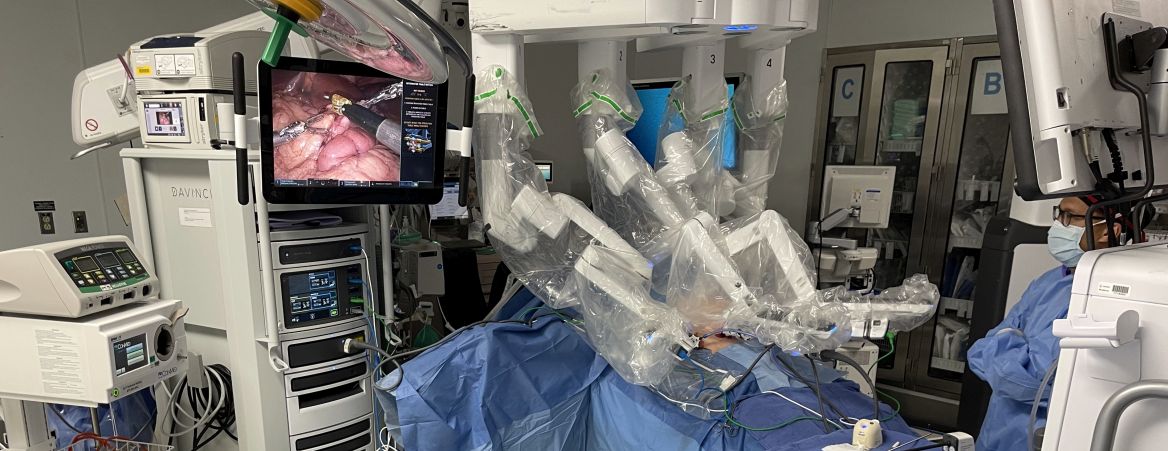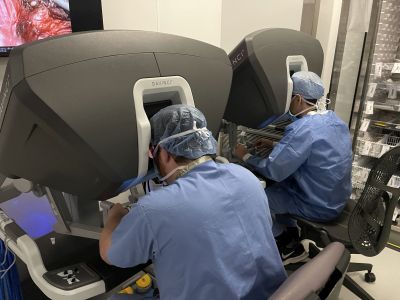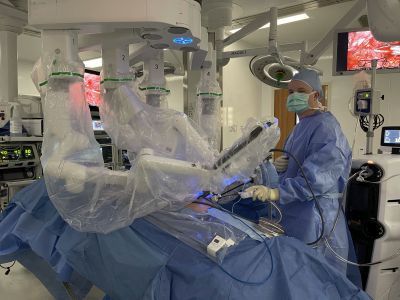Robotics Curriculum

The increasing adoption of the robotic approach to minimally invasive surgery in multiple surgical sub-specialties has been associated with improved patient outcomes. There are several benefits of the robotic platform to the surgeon such as improved ergonomics, 3D visualization, motion filtration, articulation, among others. This means that robotic surgery will become the preferred approach to performing surgical procedures in the near- and long-term future.
At the Texas Tech University General Surgery Residency program, we recognize that acquisition of robotic surgical skills is critical for the future surgeon. We, therefore; provide our surgical trainees with the resources and training to acquire these robotic surgical skills.

Over the last 3 years, we have instituted a structured resident robotic surgical skills training curriculum. This involves online modules, robotic dry-lab skills training, easily accessible SimNow advanced robotic simulator for 24/7 resident practice, biannual (spring and fall) robotic animal lab training workshops, TASSL robotic surgical skills training courses, required robotic bedside-assist training AND required robotic surgeon’s console training.
 The goal of our structured curriculum is to provide our surgical trainees with the
necessary robotic skills and increasing autonomy in robotic surgery throughout their
training until they can independently utilize the robotic platform to perform general
surgical cases. On their graduation, the chief residents will be certified in robotic
surgery and receive an equivalency certificate and a TTUHSC program letter of completion
of the robotic training curriculum.
The goal of our structured curriculum is to provide our surgical trainees with the
necessary robotic skills and increasing autonomy in robotic surgery throughout their
training until they can independently utilize the robotic platform to perform general
surgical cases. On their graduation, the chief residents will be certified in robotic
surgery and receive an equivalency certificate and a TTUHSC program letter of completion
of the robotic training curriculum.
